Sewage system: classification, technical solutions,
When did the first sewer system arise? By what signs are these systems classified? What are they made of? In the article we have to find answers to these and some other questions.
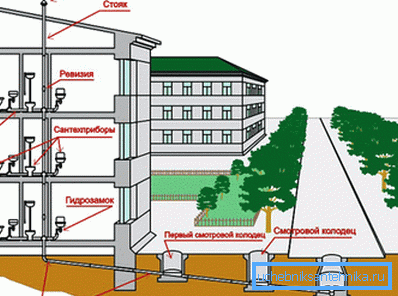
Story
Let's start with a brief historical overview.
The oldest known system for the disposal of wastewater outside the city was found during excavations in the Indian city of Mohenjo-Daro, built more than 4,600 years ago.
The second oldest project is the Big Cesspool in Ancient Rome, built at the turn of the 7th and 6th centuries BC. The scale of the structure is impressive: the canal, which played the role of a collector, has a height of more than four meters with a three-meter width.
Curiously: the sewage system built more than three thousand years ago has not just been preserved until our time. It is used to divert rainwater to this day.
At about the same time, the construction of a sewage system is dated in the 200 thousandth Chinese city of Linzi, which was huge for those times.
And what about enlightened Europe? Alas, there is nothing to brag about: until the 18th century, sewage simply poured out onto the street or, at best, into leaky pits, contaminating the groundwater. The result was quite natural epidemics, in some years mowing up to a third of the population.
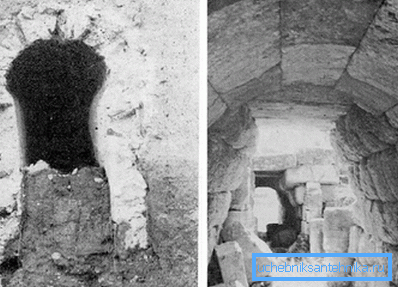
Classification
What types of sewage systems can be distinguished in our time?
Classification is possible on several grounds.
Location, functionality
- Domestic sewage collects domestic and industrial waste water inside a residential building, industrial buildings, warehouses, etc. and transports them beyond.
- Outdoor transports wastewater from buildings to wastewater treatment plants.
- Finally, the sewage treatment plant itself turns polluted wastewater into harmless solid waste, sludge (often used as fertilizer) and purified water, which can be discharged into any body of water or simply onto the relief.
Type of effluent
The composition of the effluent and its origin may also vary.
What options are possible?
- Household (fecal and household). This, in fact, is what merges into toilets, baths and kitchen sinks of residential buildings.
- Industrial - liquid waste enterprises.
- Finally, the contents of the storm sewer are rain and melt water.
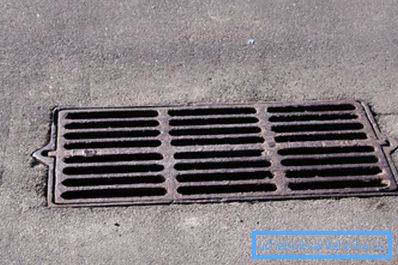
Please note: in most cases, storm drains do not require cleaning and are discharged into any local water body. Exceptions are wastewater entering the stormwater system from the territory of enterprises, bus stations, gas stations and other heavily polluted areas.
Autonomy
Household and, rarely, industrial waste systems can be divided on one more basis:
- Centralized unite drains of a large number of subscribers;
- Autonomous sewer systems are single user oriented. They have to provide not only transportation, but also utilization of products of economic activity.
Curiously: the most effective autonomous sewage systems, including stations of deep biological treatment, allow you to remove up to 98% of the pollution, which allows you to dump the treated water on the ground surface or use them for irrigation.
Head and drift
In the bulk of the sewage system of cities - self-flowing: they are laid with a constant bias towards sewage treatment plants. Alas, not everywhere the relief allows to provide the necessary slope: on hilly terrain, the transportation of drains is fully or partially provided by fecal pumps.
The corresponding scheme is called pressure.

The interaction of storm and household systems
A city or village is a territory where it is necessary to solve the problem of withdrawal of both domestic and storm drains. The withdrawal scheme can be implemented in three ways.
| Title | Description | Application |
| Common | Domestic and storm drains merge into a common network | Common sewage system is profitable primarily in small towns. The drainage network is generally much simpler; however, its capacity must be significantly higher than necessary for the removal of domestic wastewater. |
| Separate | Domestic and storm drains are collected and disposed of separately. | The scheme is typical for all major cities. |
| Partial | Domestic and storm sewage is collected by different networks, but merge into a common collector | The solution for areas with high levels of pollution. It is used where rain and melt water needs to be cleaned. |

Elements and materials
Let's get acquainted with the main elements of the sewage system and materials used to create them.
Comb
Internal sewage. It received the name for the shape characteristic of compact apartments with an adjacent arrangement of a bathroom and a kitchen: three taps (to the washbasin, bathtub and sink) form something remotely resembling a comb.
Applicable materials:
- Up to 70-80s of the last century - cast iron. To seal the socket connections, a cabol (oil-impregnated or resin-impregnated tow) and, less commonly, a sulfur melt were used.
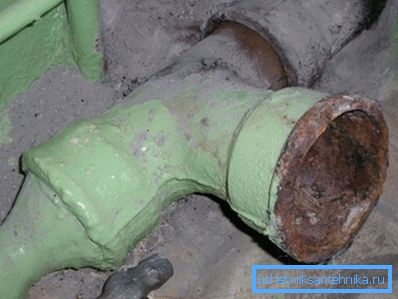
Attention: the dismantling of the gray joints requires their heating with a blowtorch or hairdryer. Doing this work with your own hands, do not forget about the protection of the respiratory organs: evaporation is so corrosive that it can cause a spasm of the respiratory tract.
- The next 20 years massively used monolithic plastic combs. They were connected with cast-iron tees with sealing all the same cabol.
- Finally, now combined polyvinyl chloride and polypropylene constructions with rubber seals are massively used.
Riser
A vertical pipe that combines the combs of several apartments. It opens to the roof, thereby providing ventilation.
According to the current SNiP, it is mandatory supplied with several revisions (cleaning holes):
- On the ground floor and / or in the basement;
- On the top floor of the building;
- With a height of more than 5 - every three floors.

There are teams of bell-shaped plastic sewer pipes, and, rarely, cast iron.
Useful: modern cast iron pipes are increasingly equipped with the same rubber seals as plastic. This somewhat simplifies installation, but does not add to the popularity of cast iron: a solid mass and three times the four times higher price make it a questionable purchase.
Lezhnevka
Horizontal branch, combining several risers and ending with the release of the well. It is equipped with revisions or cleaning at the bends; laid with a constant slope, which is determined by the diameter of the pipe:
| Diameter, mm | Slope, cm / m |
| 110 | 2 |
| 150 | one |
| 200 | 0.8 |
The materials are the same as in the case of risers. Nuance: when hanging plastic pipes, the maximum spacing between hangers should not exceed 10 diameters. The instruction is connected with the fact that for large spans plastic is able to sag under its own weight, creating counter-slopes.
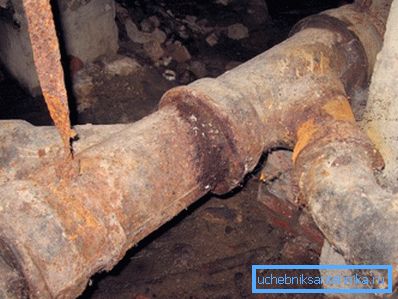
Well
Wells supplied all external sewage. The goal - a periodic revision and clearing clogs.
Inspection wells are mounted:
- On straight sections of sewerage in increments directly proportional to the diameter of the pipe.
- On all corners.
- On the connections of two or more branches.
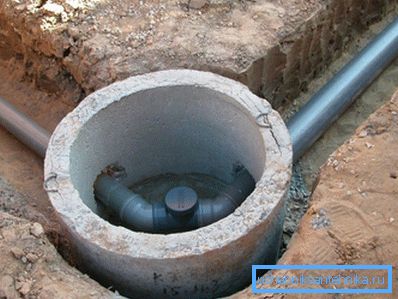
In addition, the well can compensate for the excessive slope of the relief.
The traditional material for the walls of the well is brick; Nowadays, in the construction of wells, reinforced concrete rings are massively used. Fully sealed polyethylene and polypropylene designs are gaining popularity.
Collector
Simply put, this is a big pipe that unites street and yard networks on the way to the treatment plant. Diameter - from 600 to 2400 or more millimeters. Materials - brick, reinforced concrete rings, monolithic reinforced concrete, polyethylene pipes.
Terms of use
The rules for using household sewage systems are, in general, fairly obvious:
- You can not use them for recycling insoluble and solid waste;
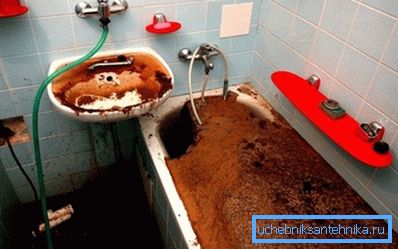
- It is forbidden to drain into the waste system toxic, volatile and flammable substances;
- It is not recommended to dump large volumes of hot water with a temperature of 80 ° C and higher (in particular, when flushing heating systems). Local overheating can lead to loss of tightness of joints and deformation of plastic pipes.
Conclusion
We hope that the materials offered to the reader will be useful.
Additional information on how the sewage system is arranged can be found in the video in this article.
Successes!